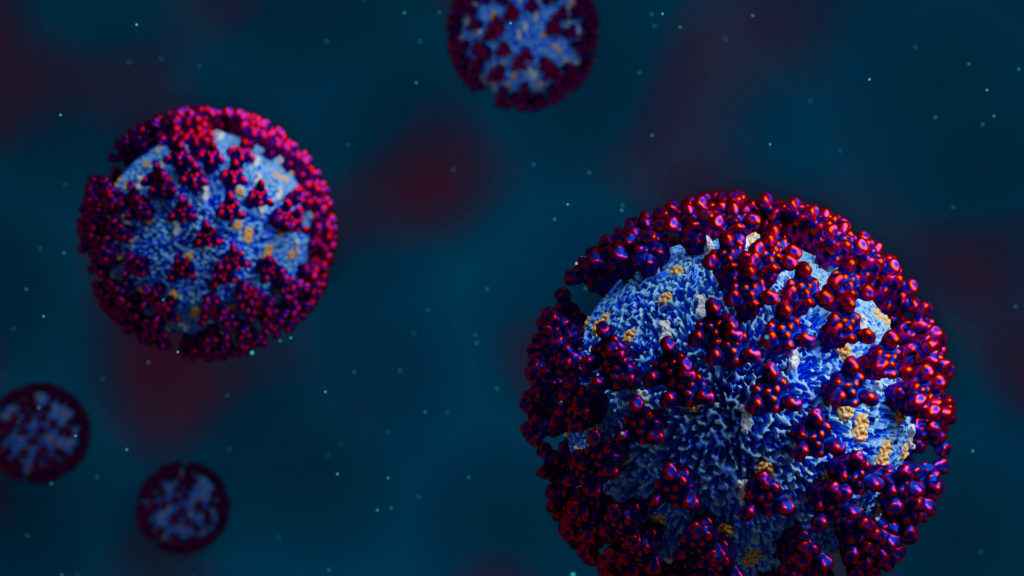Omicron may feel like a common cold, but docs say 'long COVID' is still a risk | - WPLN

The omicron variant now accounts for about 60% of new infections, according to the Centers for Disease Control and Prevention. Courtesy Oak Ridge National Laboratory
Nearly two years into the pandemic, there is still a lot of uncertainty regarding COVID-19, and well-intentioned public messaging can be easily misinterpreted.
Omicron became the dominant strain in the US in the past two weeks, and early insights on its weakened severity have put many minds at ease a bit too soon, according to Dr. Todd Rice, an internist at Vanderbilt University Medical Center.
"Even though it's probably a milder variant, I don't think it's a guarantee that there won't be long-term residual or downstream effects that are problematic for people," Rice said.
Vaccinated and boosted individuals are likely to experience a mild illness, which preliminary data suggests will feel more like a common cold — with symptoms like a sore throat, runny nose, headache and fatigue.
But mild or even asymptomatic infection can lead to "long COVID," a chronic syndrome that affects human biology in many different ways. Long COVID has an estimated 200 symptoms and conditions, which range from chronic fatigue and tremors to diabetes and lung disease. These symptoms are affecting kids and adults, and they can appear months after the initial infection and apparent recovery.
"You never really feel like you're over the virus," said Rice, who helps operate Vanderbilt's clinic for long COVID patients.
There have also been many case reports for cardiopulmonary damage, like blood clots, from asymptomatic COVID. One study of a cruise ship outbreak found that about half of asymptomatic individuals had lung abnormalities appear in CT scans.
Due to this wide range, Vanderbilt's clinic doesn't have a dedicated subspecialty handling the treatment of long COVID patients. People that can't smell or taste meet with ear, nose and throat doctors, and people with chronic aches might see a rheumatologist. Many folks just get supportive care since many symptoms don't have specific treatments.
"Part of the reason we don't have great treatments is because we don't truly understand it," Rice said.
The other main concerns with Omicron are transmissibility and resistance to vaccines and natural immunity, which is the immunity gained after a previous infection.
An early study showed that antibodies in vaccinated people are about 40 times worse at neutralizing Omicron than the original virus. Boosting certainly helps, but breakthroughs are still happening—and there is debate about whether the vaccines protect against the risk of long COVID in breakthrough infections.
The transmission rate is currently unknown, but rates are climbing — and Omicron became the dominant strain very fast. The latest CDC estimate is that the Omicron variant accounted for about 60% of all U.S. infections as of Dec. 25.
Some estimates have put the incubation period — the time between infection and symptoms — at just three days, which may be increasing the risk of transmission.
In the U.S., the 7-day average of new cases was 206,577 on Dec. 26. In Davidson County, the 7-day average on Dec. 28 was 613 cases — up from 220 the week before and 130 the week before that.
On Dec. 25, Nashville recorded 2021's new daily high for positive tests at 28.3%, according to a tweet from Vanderbilt Microbiome.
Public health experts have recently recommended upgrading from cloth masks to N95s.
Since we called the breakout just over a week ago, the parabola for the 7-day moving average of #coronavirus daily cases in #Nashville increased 2.7-fold to 613. The 7-day MA was in the 600's back in early September. Thread: 1/4 #omicron https://t.co/ZwR22p3PbD pic.twitter.com/u9P8D7H9BH
— Vanderbilt Microbiome (@VuBiome) December 28, 2021
Comments
Post a Comment